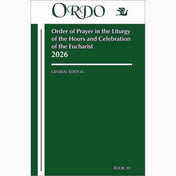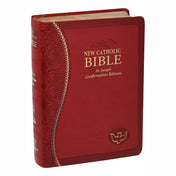From the desk of the Tar Heel disciple:
September 13, 2025
By now, most Catholics are familiar with the liturgical rule that the feasts which fall on a Sunday in given year are generally not observed. This is done so that the primacy of the Sunday celebration of the Eucharist not be obscured. But there are exceptions. The feast of the Exaltation of the Holy Cross, celebrated on September 14, is one such exception. And so, the faithful who attended Mass on Sunday, September 14, will see (have seen) the priest (and deacon) in red vestments, rather than the green so typical of the Sundays before and after this feast. (Moreover, the readings from the Scriptures are specific to the feast.)
The origins of this feast lie in the 4th century, when Saint Helena, the mother of the Emperor Constantine, made pilgrimage to the Holy Land, between 326 and 328 A.D. Tradition holds that at that time she and the Bishop of Jerusalem miraculously identified the remains of the cross on which Jesus Christ died, that is, the “True Cross.” A basilica was subsequently erected under imperial auspices to honor the place of the Crucifixion and the tomb of Christ, and it was solemnly dedicated on September 13, 335. The celebrations continued until the following day, when relics of the True Cross were shown for the veneration of the faithful. In 614, that basilica was destroyed by a Persian army and the relics of the True Cross taken from Jerusalem by the victors. The feast of September 14 also came to commemorate their recovery by the Byzantine Emperor Heraclius in 629, when they were brought to Constantinople for veneration there.
In Western Europe (specifically, in the Gallican rite), the initial finding/discovery of the True Cross came to be commemorated on May 3. And so, for many centuries the Catholic Church celebrated two feasts of the Holy Cross. In 1960, the Holy Father, Pope St. John XXIII, removed the May celebration from the General Roman Calendar of the Catholic Church, though this day is still liturgically observed in some localities, such as the Republic of Mexico, where it continues to be a significant religious and cultural festival.
When the faithful venerate relics of the True Cross and/or other images of the Cross of Christ (as at the Good Friday liturgy or privately), they are honoring Jesus Christ, who redeemed the world at the price of his Precious Blood, offered on the Cross. It is a commendable thing for a disciple of the same Lord Jesus to have a cross hanging in his home and/or workplace (if appropriate, given the circumstances). But let not such display ever be merely decorative or cultural; may the Cross so displayed be a locus and a focus of sincere prayer and gratitude for the saving sacrifice of our Lord and Savior, Jesus Christ!
Examples of crucifixes that can be hung on a wall:
https://inhisname.com/search?q=crucifix+wall&_pos=1&_psq=crucifix&_ss=e&_v=1.0




